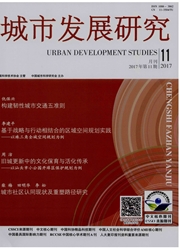

 中文摘要:
中文摘要:
近年来,我国开发区遭遇的“产城分离”困境受到普遍关注。基于工业化促进城市化的微观机理,并结合中国开发区集聚产业和人口的独特机制,探讨了中国开发区遭遇“产城分离”的内在原因。研究表明,中国开发区加工制造环节的集聚更多吸引了低收入群体在开发区周边生活,从而制约了工业化促进服务功能优化的潜能,特别是地处城市远郊的开发区,由于高收入群体大多选择克服通勤成本以获得较好的城市服务,“产城分离”比较明显,但在城市近郊发展的开发区则可能较好地克服“产城分离”问题。江苏昆山自县城周边自费办开发区开始,就注重依托旧城服务功能吸引各阶层人口就近居住生活,从而较好克服了“产城分离”,为开发区的产业转型升级优化了人力资本环境。由此可见,中国开发区遭遇“产城分离”是由独特的空间生产过程和区位特点共同决定的,而促进开发区的“产城融合”关键是以提升城市服务功能吸引高收入群体就近居住生活。
 英文摘要:
英文摘要:
In recent years, the " separation of industry and city" of development zones is generally concerned. Based on the micro mechanism of the promotion of industrialization on urbanization, this paper mainly discusses the cause of the " separation of industry and city" in development zones, combined with the unique mechanism of agglomeration industry and population of development zones in China. It shows that the agglomeration of manufacturing enterprises stimulates the agglomeration of low-income groups in the surrounding area of development zones, which restricts the potential that the industrialization can promote the urban service function. For exurb development zones, the high-income employees try to get better services in city center through overcoming the commuting cost, and the " separation of industry and city" is quite obvious. But the suburb development zones could overcome the " separation of industry and city" greatly. Kunshan, in the process of establishing development zone at their own expense, relies on the service function of the old town to attract various segments of the population to live around, which preferably overcome the " separation of industry and city". This creates a talent environment for the industrial transformation and upgrading of development zones. It proves that the " separation of industry and city" in development zones is jointly determined by the unique process of space production process and regional characteristics. And for development zones, the key point of avoiding "the separation of industry and city" is to enhance the urban service function to attract high- income people to live near development zones.
 同期刊论文项目
同期刊论文项目
 同项目期刊论文
同项目期刊论文
 期刊信息
期刊信息
